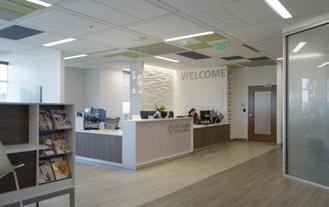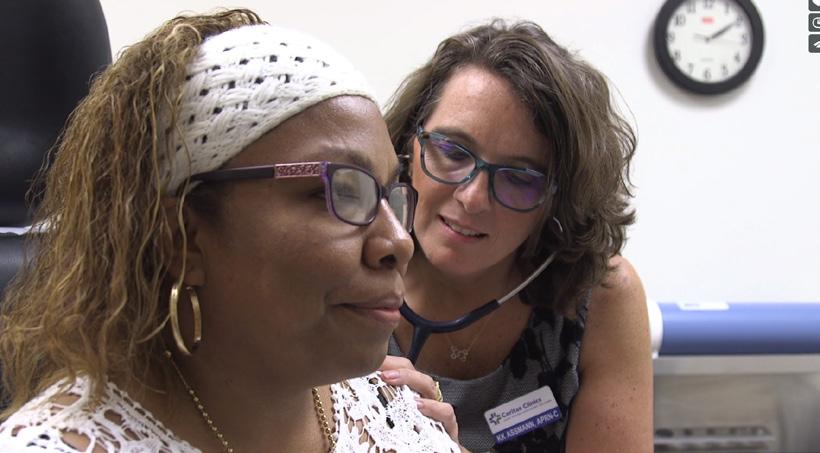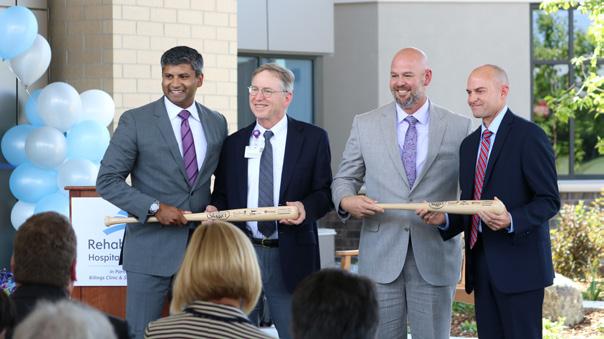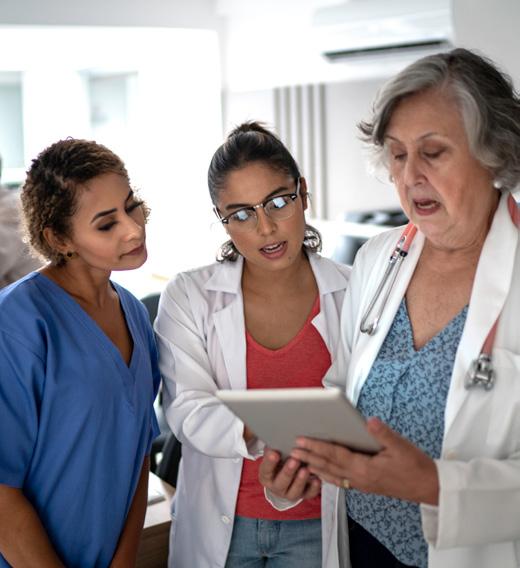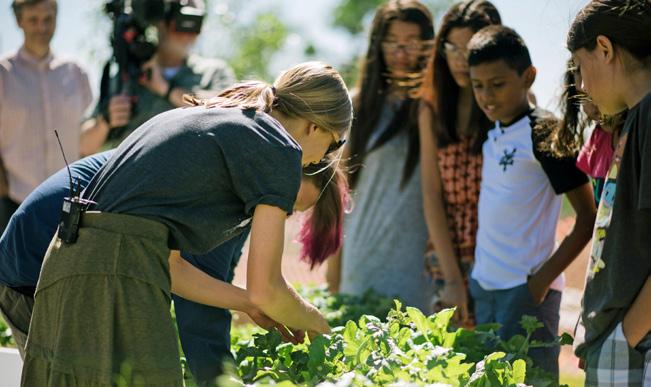
8 minute read
Addressing Social Determinants of Health
Section 2 | How We Give Back to Our Communities
AD D R E SS I N G SO C IAL D E TE R M I NANTS OF HEALTH – PROGR AMMATIC SUPPORT
Advertisement
The environments in which we live, work, learn and play impact our health risks and outcomes. This includes factors such as economic stability, education, social and community environment, food security, housing and transportation. SCL Health addresses these factors, or social determinants of health, by continually evolving approaches to community benefit and health improvement investments. Now more than ever, it is important to work with stakeholders across multiple business segments to solve pressing issues. This involves working with public health, community-based organizations and social support agencies so together we can make a bigger impact on the health of the people we serve. Last year, the SCL Health ministry made gains in addressing the root causes of poor health by focusing on social determinants of health, specifically food and housing security, as part of our effort to build a culture of health and overall well-being.
Cultivating connection and community access to fresh food
Fresh food nourishes the body, and the act of gardening can actually feed the soul. Through a collaboration with the Colorado chapter of Big Green, SCL Health is helping a vulnerable population grow their own food – and what’s being returned goes beyond fruits and vegetables. Big Green, a national nonprofit organization, builds learning gardens in schools across the country. Learning gardens serve as outdoor classrooms to connect kids to real food, leading to increased academic achievement, all while driving community engagement. A portion of SCL Health community benefit investments supported these projects to improve access to fresh fruits and vegetables, nutrition education and obesity prevention.
Last April, our investment helped Big Green build a learning garden at Brady Exploratory High School, an alternative school in Lakewood, Colorado, for students who have been unsuccessful in traditional school. A Big Green impact on Mount Saint Vincent
Mount Saint Vincent’s school, which provides academic programming to students from pre-K through middle school, received a learning garden in 2019. The garden was built thanks to investments from Big Green, Leprino Foods Company and Mount Saint Vincent’s Board of Directors. The garden serves children in the residential program, where they receive intensive services after surviving extreme trauma, abuse and neglect.
With help from SCL Health, Brady High School Learning Garden was built in April 2019. Brady High School is in Jefferson County with 400 students, 68 percent of whom receive Free and Reduced lunch. Once the learning garden was constructed, Big Green’s team implemented their food literacy and nutrition programming for Brady’s students. They organized planting and harvest days, provided teacher workshop training and helped educators integrate the garden into their teaching. Brady uses learning gardens to focus on overall health, including an emphasis on mental health and wellness programs.
The garden not only serves Brady’s students, where 72 percent of students receive free and reduced lunch services, but also serves their families and the general community.
“With such a transient population, families are rarely able to have their own gardens or grow fresh produce. Because of these challenges, the young generation in this neighborhood does not have access to any sort of enrichment or education around healthy eating and nutritional well-being. The garden is a long-term education opportunity, and I suspect it will have an amazing impact on our students,” says Angelina Valvona-Herndon, Lead Teacher at Brady High School. The garden was maintained throughout the summer and fall of 2019 by students, parents, teachers and community members. During the summer, volunteers harvested a variety of fruits and vegetables – including corn, pole beans, squash, and salad and salsa vegetables – providing healthy food to the community. When school started back in the fall, more than 30 pounds of produce were harvested for the school. Big Green will ensure Brady’s learning garden can be harvested for at least two full growing seasons each year.
Tapping into creativity and collaboration to address housing security
Across SCL Health, work is underway to create collaborative solutions to provide housing security to the most vulnerable members of the communities we serve.
Breathing new life into an old building to house senior citizens
The Saint Joseph Hospital campus in central Denver is now home to Tammen Hall Apartments. The former nurse dormitory was built in 1932 and sat vacant on the campus for more than a decade. After an extensive renovation of the building, 49 units opened in September 2019 and now houses low-income seniors. The units are situated close to our medical facilities and offer nearby access to grocery stores and transportation.

“This project is a triple win. We preserve a historic building, create affordable housing for seniors and community,” says Jamie Smith, President of Saint Joseph Hospital.

In addition to SCL Health’s financial investments in this project, a combination of federal and state tax credits for historic enhance our
preservation and low-income housing, contributions from the Neenan Company and a loan from the Denver Office of Economic Development, helped make these apartments a reality.
New approach to affordable housing helps the elderly stay at home
Good Samaritan Medical Center in Lafayette, Colorado, collaborated with Flatirons Habitat for Humanity and the Community Housing Development Organization to address the affordable housing crisis for the elderly who want to stay at home as they age. The investment helped make possible the purchase of land in an area formerly known as the Glory Community in Broomfield and the development of Cottonwood Cooperative Independent Living Home, which opened in 2019. The independent living home features eight single rooms (four of which are handicap accessible) for individuals 55 or older whose income is at or below 80 percent of the area median income. Residents have their own private space and share a common area that includes a kitchen, living/dining room, library and community Sheltering homeless college students Lutheran Medical Center is actively involved in a groundbreaking collaboration with The Action Center, STRIDE and Red Rocks Community College to address student housing insecurity. At Red Rocks Community College alone, 46 of the students enrolled in 2019 were homeless. This number only accounts for students age 24 and younger. Thanks to investments from the collaboration, The Action Center’s homeless shelter in Lakewood, Colorado, which closed in 2017 due to lack of funding, reopened in 2019.

garden. This unique living arrangement helps residents be part of something beyond simply renting an
apartment: They belong to a community.
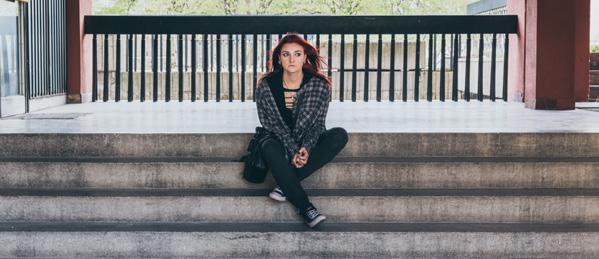
When it reopened, it was transformed into temporary housing for Red Rocks students. The center can house up to 12 students each semester, which in addition to bedrooms features a kitchen, laundry and study area, and includes internet access. As part of the program, students who qualify also have access to educational scholarships, a mobile health van and mentoring/ shadowing opportunities. Now these students are able to focus on their education and preparing for their future without worrying about not having a place to live.
Housing and mental health support for Butte’s chronically homeless takes strain off community-based services
People experiencing chronic homelessness in Butte, Montana, often turn to St. James Healthcare’s Emergency Department or commit petty crimes to land themselves in jail – just to have someplace warm and safe to lay their heads. These acts of desperation add up: In one year, 19 individuals cost the hospital, local corrections and the overall Butte community around $1 million in expenses.

A collaborative approach was desperately needed to improve health outcomes and reduce the community-wide shared cost of providing emergency housing to this population. The Montana Healthcare Foundation awarded St. James Healthcare a $100,000 implementation grant in 2019 Margie Seccomb, Chief Executive Officer of Action Inc., and Kevin Dennehy, Vice President to bolster the Butte-Silver Bow Supportive of Strategy and Business Development at St. James Healthcare Housing Development Project. This project is a coalition of community organizations in Butte working to through various support systems, whether through create housing solutions and provide case management bridge housing or housing voucher programs. assistance for the homeless community frequently using public services. “What we hope to see is that we have permanent The grant builds on $80,000 in initial funding St. James stable permanent house where they are getting services Healthcare received from the Montana Healthcare they need to live happy and healthy lives,” says Vice Foundation in 2018. Those funds were used to identify President of Strategy and Business Development for St. regular users of public services in Butte, study their James Healthcare, Kevin Dennehy. economic impact and estimate the potential savings to the community if those individuals had access to The 2019 funds went toward training existing community permanent housing. agency staff to develop initial supportive housing services Since the completion of the first phase of the and comprehensive health and mental health services for collaborative project, six of the 19 people identified to the individuals who rely on this program. be in need of these types of services have been housed housing for a number of these people, so they are in a and provide permanent mental health case management


